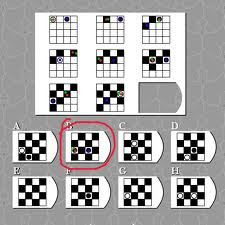Connections-Thinking: It's Critical
 It's been said that one measure of intelligence is the ability to discern patterns among seemingly unrelated bits of information. The secret lies in that word "seemingly." In truth, there are numerous connections to be made within a given word or fact or observation. Consider the words of naturalist John Muir, "When we try to pick out anything by itself, we find it hitched to everything else in the universe. "
It's been said that one measure of intelligence is the ability to discern patterns among seemingly unrelated bits of information. The secret lies in that word "seemingly." In truth, there are numerous connections to be made within a given word or fact or observation. Consider the words of naturalist John Muir, "When we try to pick out anything by itself, we find it hitched to everything else in the universe. "
HELP YOUR CHILD "HITCH"
At his informative website (www.criticalreading.com), author Dan Kurland describes what is happening when people think critically. Among other things, he notes, critical thinkers evaluate all reasonable possibilities surrounding the solution to a problem.
Kurland's not the only one to endorse a wide-net inclusion of alternatives. Journalist H.L. Mencken also noted that "for every complex problem, there is one solution that is simple, neat....and wrong!" Students will often "jump" at the first answer that seems right and then feel defeated when told that answer is not correct. Those willing to tolerate chaos for a while longer and to consider non-obvious ramifications of the situation can hone their critical thinking skills and prepare themselves for future, more-complex problems.
PATTERNS ON THE GO
IQ tests are filled with questions related to a learner's ability to find patterns-- some visual, some verbal, some mathematical. As your child gets closer and closer to college and even graduate school admission, he will continue to get
pattern-questions on various tests. (More about that below)
To illustrate: What letter clearly, visibly, proportionately, obviously does not belong in the diagram below?

Try this with your family. You will no doubt get some "good" answers. For example, the "c," because all the other letters are closed letters. Or, the "b," because--if letters could be said to be facing a certain way--they are all looking to the right, but the "b" is looking to the left. Or the "g," because it is out of order. (In the alphabet, it comes after, not before the letter "d.") Or even the "g," because it is the only letter that lies partially beneath the line. Or the "c," because it is the only "open" letter. Yes, all of these are good answers. But the only letter that is truly visibly and proportionately out of place is the letter "t."
Whenever you can, explore multiple possibilities to given situations. Develop critical thinking via connections-thinking such as answers to this question: "What if elephants could fly?" (Consider airports, big and study umbrellas, air traffic control, and so on.) Ask one such question a week of your family. Have an outside judge select his or her favorite and award a token prize to the "If-er of the Week."
Critical reason skills are vital for students wishing to well on the SAT examination, a test that at its core, is a reasoning test. At Think Tutoring, our SAT Prep program prepares students to succeed by not only mastering the fundamental skills of math, reading and writing, but recognizing patterns and applying deductive reasoning. Because the first and most obvious answer is not always the correct one.
For more information on our SAT Prep Program, call as 973-593-0050, or visit us at www.thinktutoring.com.